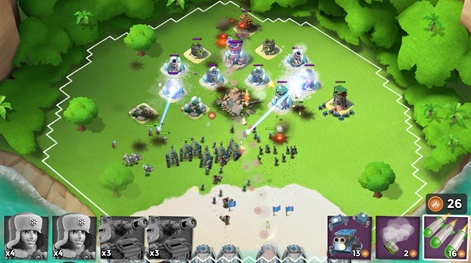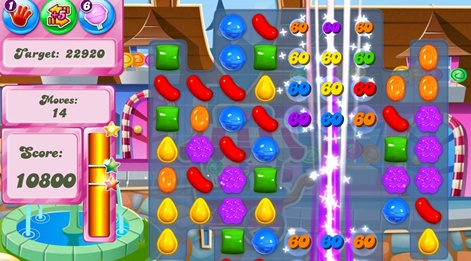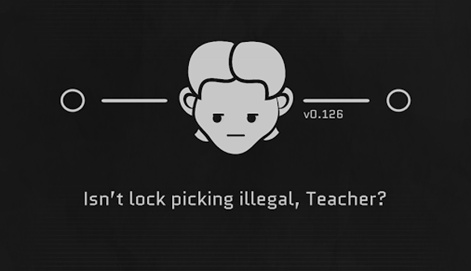Pepe Agell is the VP of business at Chartboost.
This article is part of an ongoing partnership with Chartboost. You can read more of its advice in terms finding new players and monetising audience via its Playbook blog.
Getting retention right is tough. A recent report from Appboy showed that more than 75% of new users fail to return to an app the day after first use.
Take Pokemon GO for example: despite all the hype and initially excellent performance in the mobile games market, recent reports suggest the game has lost 10 million DAUs during July - leading to a dramatic decline in retention.
Retention is paramount for game success. Strong retention numbers means the money spent accumulating users is being put to good use - and more users means increased in-app purchasing opportunities.
What’s more, retention is actually more cost-effective than acquisition, which can cost six to seven times more.
Fortunately, many game developers have taken the retention challenge head-on and succeeded with a focus on game design and retention tactics such as monetisation and effective in-game communication.
According to Verto Analytics, Supercell's Clash of Clans and Boom Beach were still achieving Day 7 retention rates of 39% - nearly two years after each game had launched.

So, how can indie devs follow Supercell's lead to improve their mobile game's retention?
Know your players
Once a mobile game is available in an app store, devs should kick their analytics game into high gear to learn as much about the player base as possible.
“Player retention ultimately comes down to appealing to the individual player," says Ben Murch, creator of Perchang and Warhammer Quest.
“We [the games industry] often think of games in broad, sweeping terms. However, getting individuals to buy into your title on a personal level is the most important thing."
By implementing back-end analytics, devs can glean the demographic makeup of their game's player base, making it easier for them to update or support the game to suit the tastes of those players.
Analytics will also help a developer identify where a game might be going wrong and fix it quickly. For example, in a famous talk at GDC, the makers of Candy Crush Saga spoke about how they used analytics to determine when levels were too easy or hard.

They then tweaked the difficulty level to ensure that a player who cleared the hard to beat levels in the mid ‘60s was able to relax and recharge with some simpler levels afterwards.
And with Apple and Google now committing to update approval times of less than 24 hours, developers with in-game analytics can rapidly adjust to user behavior - stopping short-term frustration from turning into churn.
Communicate with players
Mobile games used to be static - think Tetris and every PC and console game that was contained in a CD. Most mobile games today, in contrast, have the potential for many iterations after the initial release.
Because devs are expected support a single game for a long time, mobile games have come to operate like services. That means devs must expend time and effort toward supporting the service element of the model as part of the game design.
One effective service-based retention tactic is effective communication, i.e. keeping players up to date with what's going on in a game.
Social channels like Facebook, Twitter and YouTube can be great places to inform avid players of new features. For example, Supercell allows trusted YouTube influencers to introduce new Clash Royale cards - feeding the broader community and informing players at the same time.
Meanwhile, in-app communications can be used successfully to spread relevant messages by targeting the right players at the right time.
According to Marketing Land, app developers who send push notifications to users segmented by profile (e.g. 24-year-old, urban male) generate an average CTR of 13%.
This is nearly twice as effective as sending a notification to an app's entire user base, suggesting that developers need to hone in their message to hit key user groups effectively.
Match monetisation to genre
Finally, devs should carefully consider their monetisation strategy: does it encourage players to keep coming back?
While most game developers currently favor in-app purchases or mobile advertising, Apple and Google's decision to encourage the use of subscription models could help developers with services to retain effectively - according to Neil Rennison, co-founder of Tin Man Games.

“For Choices: And The Sun Went Out, we decided to go for a subscription model," Rennison explains.
“As our game is mainly story based (with new content delivered weekly), subscription ensures we can retain players over a long period."
So, while subscription might not be right for every developer out there, developers can think about adjusting monetisation to fit the habits of their userbase.
Bethesda Game Studios' free-to-play simulation game, Fallout Shelter, might have only monetised briefly when it launched in 2015, but its low-cost booster pack mechanics fit the fast play style of its hardcore fans.
For games looking to monetise with advertisements, finding pauses in play will allow players to meaningfully interact with revenue generating display adverts.
There is no one-size-fits all approach to improving mobile game retention. Every game is different and each company will find different ways to increase this all-important metric.





















